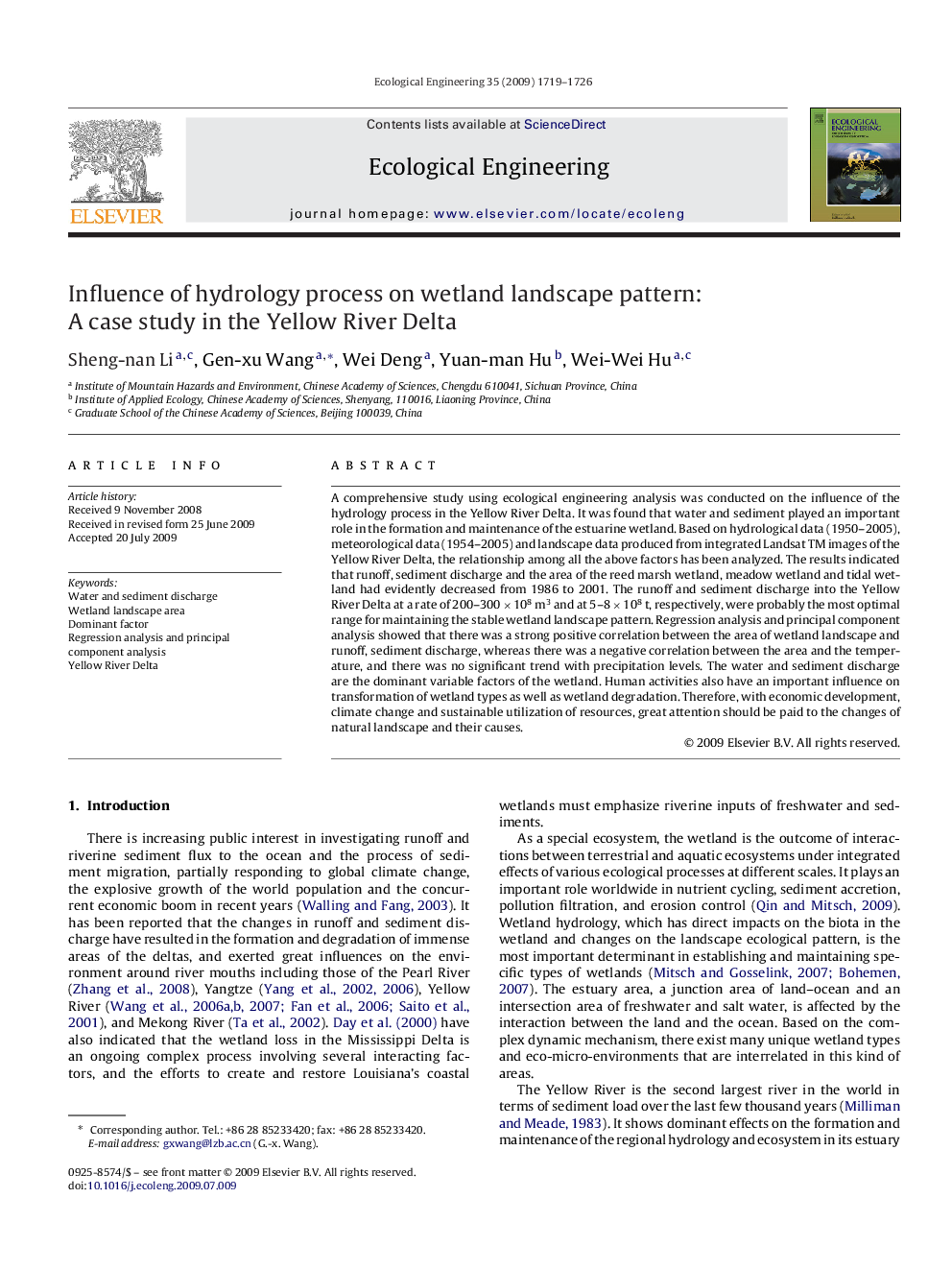| Article ID | Journal | Published Year | Pages | File Type |
|---|---|---|---|---|
| 4390412 | Ecological Engineering | 2009 | 8 Pages |
A comprehensive study using ecological engineering analysis was conducted on the influence of the hydrology process in the Yellow River Delta. It was found that water and sediment played an important role in the formation and maintenance of the estuarine wetland. Based on hydrological data (1950–2005), meteorological data (1954–2005) and landscape data produced from integrated Landsat TM images of the Yellow River Delta, the relationship among all the above factors has been analyzed. The results indicated that runoff, sediment discharge and the area of the reed marsh wetland, meadow wetland and tidal wetland had evidently decreased from 1986 to 2001. The runoff and sediment discharge into the Yellow River Delta at a rate of 200–300 × 108 m3 and at 5–8 × 108 t, respectively, were probably the most optimal range for maintaining the stable wetland landscape pattern. Regression analysis and principal component analysis showed that there was a strong positive correlation between the area of wetland landscape and runoff, sediment discharge, whereas there was a negative correlation between the area and the temperature, and there was no significant trend with precipitation levels. The water and sediment discharge are the dominant variable factors of the wetland. Human activities also have an important influence on transformation of wetland types as well as wetland degradation. Therefore, with economic development, climate change and sustainable utilization of resources, great attention should be paid to the changes of natural landscape and their causes.
